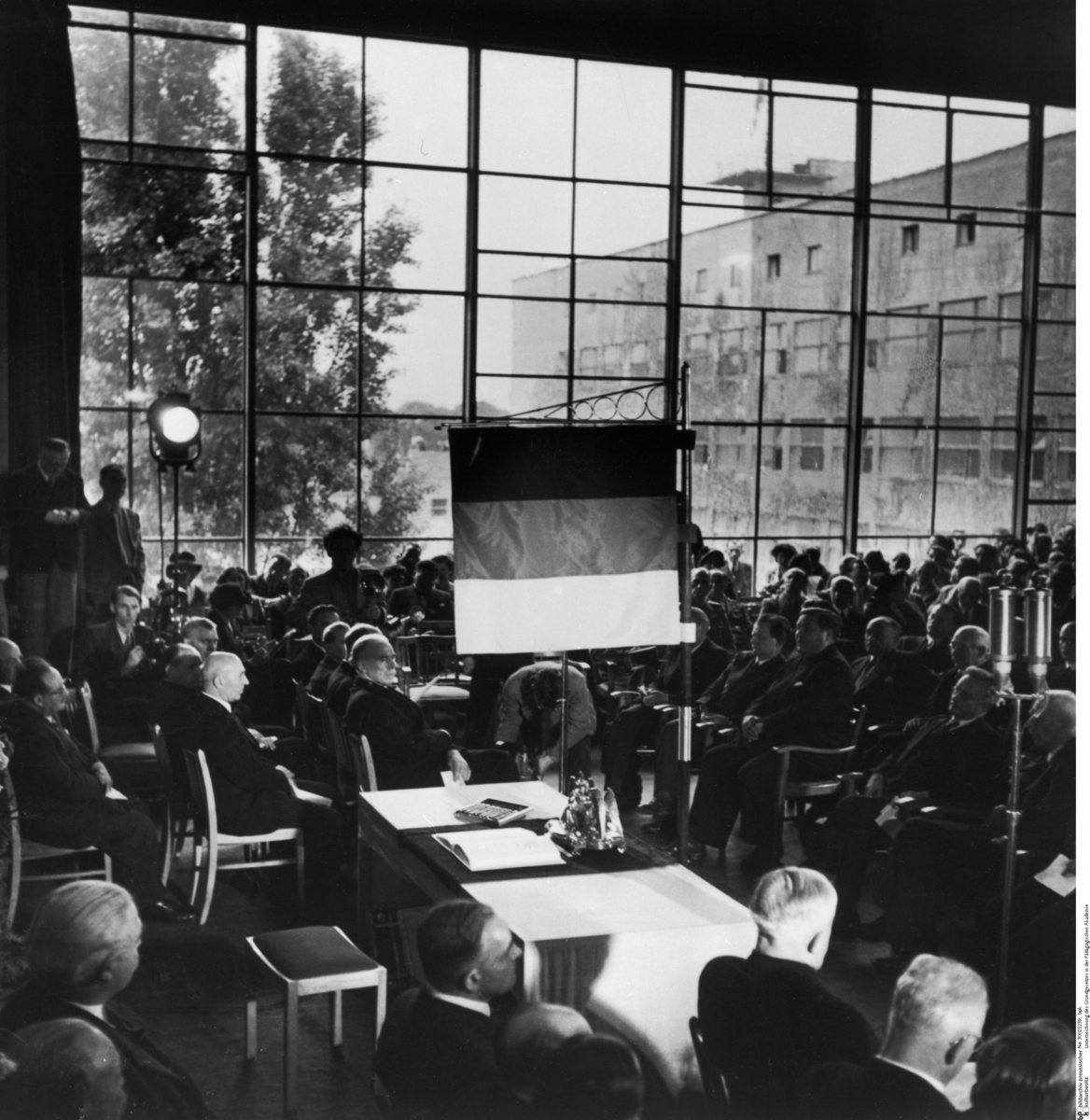Abstract
The Parliamentary Council consisted of sixty-five voting members
(twenty-seven each for the CDU/CSU and the SPD; five for the FDP; and
two each for the KPD, the DP, and the Center), and five non-voting
representatives from Berlin. It was tasked with holding deliberations on
the Basic Law proposed by the constitutional convention that had met on
Herreninsel in the Chiemsee from August 10-23, 1948. An official opening
ceremony for the Parliamentary Council was held on September 1, 1948,
and the group began work that very same day. It met in Bonn’s
Pedagogical Academy, a building constructed in the sober, functional
Bauhaus style so detested by the Nazis. (The academy had been quickly
transformed and expanded into an assembly hall.) With its large window
façades, the new legislative chamber, designed by architect Hans
Schwippert, projected modernity, openness, and political transparency,
and thereby symbolized the young republic’s desire for a new democratic
start.
On May 8, 1949, the council approved the Basic Law. It was
approved by the three Western military governors on May 12, 1949. After
ratification by the German states, it was signed at the last meeting of
the Parliamentary Council on May 23, 1949, and promulgated that very
same day. The presence of representatives of the Allied military
government made it clear, however, that four years after the end of the
war, the newly founded “Federal Republic of Germany” was still occupied
and not a completely sovereign state. The term “Basic Law” emphasized
the provisional character of the constitution and the state itself,
which was supposed to be replaced by a reunified Germany at some point
in time. In his concluding remarks at the signing ceremony, Konrad
Adenauer, then president of the Parliamentary Council, said: “We wish
and hope that the day might soon come when the entire German people will
be reunited under this flag.”
